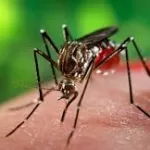WASHINGTON, DC – The gut microbiome, long dominated by bacterial research, is revealing a more complex ecosystem where bacteriophages and fungi play crucial, influential roles in health and disease, according to experts speaking at the Gut Microbiota for Health (GMFH) World Summit 2025.
While fungi constitute less than 1% of the gut’s genetic material, they account for 1-2% of its total biomass, wielding an “important and outsized influence on gut health,” explained Kyla Ost, PhD, from the University of Colorado’s Anschutz Medical Campus. Dr. Ost, whose research focuses on the fungus-immune system interface, highlighted that this impact stems from their unique interactions with the immune system.
Meanwhile, bacteriophages – viruses that specifically infect and often kill bacteria – are highly abundant residents of the gut. “Bacteriophages begin to colonize our GI tract at the same time we develop our own microbiome shortly after birth,” said Robert (Chip) Schooley, MD, distinguished professor at the University of California San Diego School of Medicine. He added that phages continuously interact with gut bacteria, shaping, and being shaped by, the microbial communities we host.
Dr. Schooley, co-director of the Center for Innovative Phage Applications and Therapeutics, posited that phages might be the single largest influence on gut bacterial composition, surpassing factors like diet, genetics, and immune responses.
Phage Therapy: A Resurging Field
The potential of using phages therapeutically is gaining significant traction, particularly against the backdrop of rising antimicrobial resistance (AMR). AMR was associated with an estimated 4.95 million deaths globally in 2019, a figure projected to reach 8.22 million by 2050. “Bacteriophages represent a promising approach for the treatment of multidrug resistant bacterial pathogens,” Dr. Schooley stated.
Beyond fighting acute infections, phage therapy holds potential for modulating bacteria implicated in chronic diseases. “We have proof-of-concept studies about the ability of phage to modulate bacteria in the digestive tract,” Schooley noted, pointing to an increasing number of clinical trials.
Discovered over a century ago, phage therapy was largely sidelined in the West by the advent of antibiotics but persisted in Russia and former Eastern Bloc countries. Its resurgence in the West began roughly 10-15 years ago, fueled by compelling case reports, including the high-profile recovery of UC San Diego colleague Tom Patterson from a deadly multidrug-resistant infection using phages.
Current research explores using engineered phages to prevent infections during high-risk periods, such as chemotherapy for hematopoietic stem cell transplants (HSCT). Dr. Schooley described a CRISPR-enhanced four-phage cocktail (SNIPR001) designed to selectively kill E. coli, including resistant strains common in HSCT patients. In mouse models, this cocktail reduced E. coli gut colonization and effectively broke down biofilms, demonstrating the potential to engineer “better killer” phages. A phase 1b/2a clinical trial is planned.
Other promising areas include targeting:
- Cytolysin-producing Enterococcus faecalis linked to worse outcomes in alcoholic hepatitis (phage therapy abolished ethanol-induced liver disease in mouse models).
- Adherent invasive E. coli in Crohn’s disease.
- Klebsiella pneumoniae, implicated as an exacerbator in inflammatory bowel disease (IBD) and primary sclerosing cholangitis (research from Japan showed phage therapy ameliorated liver inflammation).
Despite the promise, challenges remain, including the narrow host range of phages, difficulties in predicting in vivo success from lab tests, phage instability in stomach acid, and gaps in understanding phage pharmacology and host immune responses.
The Fungal Frontier: Friend and Foe
The gut mycobiome, dominated by Candida, Saccharomyces, and Malassezia genera, also profoundly interacts with the host. Dr. Ost explained that fungi stimulate distinct immune pathways compared to bacteria.
Some fungi, like Candida dubliniensis, can be beneficial. Research showed its colonization in young, antibiotic-exposed mice promoted pancreatic beta cell development and improved metabolic health. However, the same fungal genera, notably Candida, can also drive pathogenic inflammation in conditions like IBD, colorectal cancer, and pancreatic cancer. “Candida is a lifelong colonizer… that rarely causes disease but can be quite pathogenic when it does,” Ost stated.
Pathogenicity often depends on the fungal strain, its morphology (shape), and virulence factor expression. Candida albicans, associated with IBD, can switch between a less harmful “yeast” form and a more invasive, adhesive “hyphae” form. Research indicates that Immunoglobulin A (IgA) antibodies in the gut preferentially target and suppress the pathogenic hyphal form. This suggests potential therapeutic strategies, such as vaccines like the experimental NDV-3A, which targets fungal adhesins and showed protective effects in a mouse colitis model by inducing an IgA response against C. albicans.
Disclaimer: This news article is based on information presented at the Gut Microbiota for Health (GMFH) World Summit 2025. The research discussed represents ongoing work and findings presented at a scientific conference. It may not yet have undergone full peer review or represent established medical consensus. Clinical applications, particularly regarding phage therapy and fungal modulation, are largely still in research or experimental stages. Consult with healthcare professionals for medical advice.
Disclosures: Dr. Kyla Ost reported having no relevant financial disclosures. Dr. Robert Schooley disclosed consultancy roles for SNIPR Biome, BiomX, Locus, MicrobiotiX, and serving on the Amazon Data Monitoring Committee for Merck.












